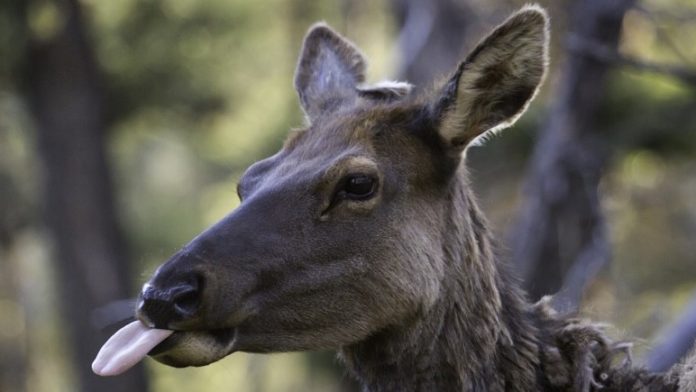Catch me if you can: a study of female elk has found that with age and experience, they develop skills and strategies to avoid hunters. Around the age of 9 or 10, they become so well adapted that they are almost “bulletproof”, according to lead researcher, Henrik Thurfjell.
Thurfjell, a University of Alberta researcher, hypothesized that the stealth abilities of female elk are developed over a lifetime and not just the result of innately cautious behaviour.
As part of the investigation, his team attached GPS trackers to 49 female elk in southwestern Alberta and southeastern British Columbia and studied their movements for six years.
The conclusion? A case of both nature and nurture.
Reckless males don’t make the cut
Female elk are warier than their “live fast, die young” male counterparts, who are lucky to make it past 4 years of age in this popular hunting region.
Females live in groups, where they may witness their fellow elk get shot and learn from the experience. Males are solo creatures, but they are also easier to hunt for a number of other reasons, one being their tendency to check out hunters’ bugle calls that sound like a rival male is in the area.
Wise elders who survive consecutive hunting seasons limit their movement as they get older to avoid detection. Areas with dense forest are used as cover when passing near a road, though they avoid roads altogether when possible.
Incredibly, there is also evidence that the older females adapt their behaviour to the weapon that threatens them.
Bow and rifle seasons are at separate times, and the data show that the elk stick to steep, rocky terrain during the former and dense forest during the latter. Bow hunters typically restrict their shots to a maximum of 40 metres, so it’s difficult if not impossible to land a shot in this context. Rifles can be reasonably effective up to 300 metres, but this doesn’t help if you don’t have a clear shot.
How are these clever elk always one hoof ahead? Obviously, they can’t track the seasons, but Thurfjell believes it’s possible they notice warning signs, such as an increase in slow-moving vehicles on roads, which suggests rifle season.
Deer-plomatic relations
Tension exists between farmers and the elk, who munch on their crops and wreck fences. This is a major issue for both farmers and conservationists, as the elk impact livelihoods but are often decimated by reactionary culls.
Thurfjell believes the evidence from this work might deem culls unnecessary. Farmers could instead pick off one or two from a trespassing herd since the remainder will learn from the experience and avoid farmland in future.
Hunters could also apply a certain amount of hunting pressure in the local area, minimizing the impact on the elk while keeping everyone happy. “Cooperation between hunters and landowners could get good results for everyone, including the elk,” says Thurfjell.





































